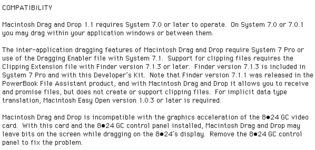MrFahrenheit
Well-known member
Having looked over the benchmark data from MacWorld 1993, I’m just left wondering more than anything.
Why do vintage collectors like ourselves want to have the Apple 8.24 GC card in their machine over nearly any other card? Clearly other cards perform better. It was near the bottom of the performance list from the 1993 article.
Is the GC card akin to the Macintosh IIfx? A highly desirable machine “just because”? An LC475 clearly overpowers a IIfx yet sells for 1/5 the price and is less desirable.
What are your reasons for wanting the unicorn GC card? I’m just left sitting here wondering why I should have one or even have one installed in a machine, when there are better options.
I didn’t have any NUBUS equipment at all back when I used vintage Macs in the 90s. I never experienced or read up on them, as they were things I’d never want or need or have money for. So, I’m just trying to experience what I missed out on now.
What are your thoughts?
Why do vintage collectors like ourselves want to have the Apple 8.24 GC card in their machine over nearly any other card? Clearly other cards perform better. It was near the bottom of the performance list from the 1993 article.
Is the GC card akin to the Macintosh IIfx? A highly desirable machine “just because”? An LC475 clearly overpowers a IIfx yet sells for 1/5 the price and is less desirable.
What are your reasons for wanting the unicorn GC card? I’m just left sitting here wondering why I should have one or even have one installed in a machine, when there are better options.
I didn’t have any NUBUS equipment at all back when I used vintage Macs in the 90s. I never experienced or read up on them, as they were things I’d never want or need or have money for. So, I’m just trying to experience what I missed out on now.
What are your thoughts?

